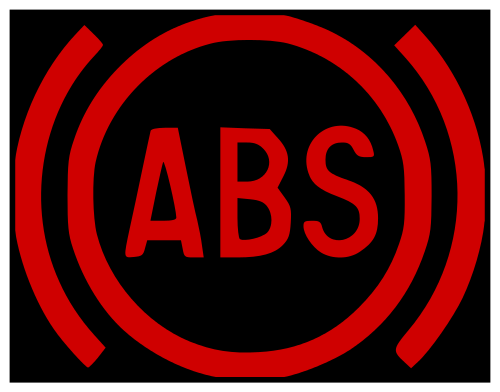
A lot of people take anti-lock braking (ABS) systems for granted these days. That is likely because ABS technology has grown to become a standard safety feature on most new cars, pickup trucks, and SUVs. It may seem hard to believe now, but ABS systems didn’t even exist for a long time. The evolution of the ABS system technology has followed a long and complicated path. It took many years and a lot of hard work to make anti-lock brakes the standard safety devices they are now.
Tracing the beginnings of ABS safety systems goes back almost a century. Back in the 1920s, engineers were looking for an automatic override braking system for airplanes, not cars. These early systems served the same function they do now; they prevented wheels from locking up during rapid slowdowns and on slick surfaces. The first ABS systems were aircraft-only devices for several decades. However, in the 1950s manufacturers started to implement ABS systems on motorcycles. The reasoning was that skidding and lost traction were major risks for bikers, and ABS improved safety considerably. It was only a matter of time before ABS was translated into an automotive setting.
Further Developments in ABS
After its successful use on motorcycles, ABS became a focus of car and truck designers during the 1960s. The first model equipped with ABS was the Ford Zodiac. Unfortunately, such braking systems were far too expensive to use widely. That is, until the 1970s, which was when Cadillac started offering ABS on some of its premium vehicles. At first, they were offered as a high-priced add-on feature. For a time, ABS systems continued to be too expensive for the average car buyer. Since the 1970s, however, ABS technology has improved greatly and it has also gotten cheaper. These days, computer-controlled sensors are placed on each wheel, in order to make anti-lock brakes more effective than ever before.
ABS Q & A – Why are Anti-Lock Brakes Safer?
How Does an Anti-Lock Braking System work?
ABS works by automatically releasing and then reapplying or ‘pumping’ the brakes to your vehicle’s wheels in heavy braking situations. Sensors on each wheel detect ‘locking,’ or when a wheel stops moving and starts to skid. All ABS systems are not the same. Some only prevent wheels on the rear axle from locking up. When a lock-up is detected, ABS pumps the brakes, 100’s of times a second. This stops the wheel or wheels from skidding and helps keep the driver in control of the vehicle. Essentially, ABS works in three stages:
- The brake pedal is pressed
- The wheel sensors detect skidding or ‘locking’
- The ABS pumps the brakes
How is an ABS System Activated?
With ABS, all you have to do is “brake and steer”. With a four-wheel ABS system, push the brake pedal while steering normally and keep your foot firmly on the brake pedal until the car comes to a complete stop. No matter what, do not take your foot off the brake pedal or pump the brakes, because doing that will disengage the anti-lock system.
Should I Still Pump My Brakes When Driving a Car with ABS?
No. ABS systems work best when you firmly hold down the brake pedal and allow it to manage the details of emergency braking.
Does ABS reduce stopping distance?
Sometimes, but not always. In most emergency situations, for instance, a 4-wheel ABS can activate and pump the brakes faster than most drivers could on their own. That’s why on most road surfaces, a 4-wheel ABS system is more likely to stop your car faster than a car without it. That said, however, 4-wheel ABS can actually increase stopping distance on some very slippery surfaces, such as when the road is very wet, or when lightly packed snow or ice is present on the road.
What’s the Difference Between 4-Wheel ABS and Rear-Wheel-Only ABS?
First of all, always be sure to check your owner’s manual to find out if your car has 4-wheel ABS, rear-wheel-only ABS or if it has no ABS at all. While 4-wheel ABS is meant to aid steering and is found in nearly all new cars and minivans, rear-wheel-only ABS, which is usually found in some pickup trucks, vans, and SUVs, is only designed to help prevent those vehicles from spinning out on slippery surfaces.
Is an ABS System Necessary?
If you don’t have anti-lock brakes, hard braking can cause the wheels to lock up, which can send you into a skid. … “The main benefit of anti-lock brakes is it reduces those problems on wet and slippery roads, so if you think about winter driving it is important to have.”
Do All New Cars Have ABS?
Over the past decade or so, most car makers have included ABS standard in their vehicles. Also, the federal government has required all new cars to have ABS systems standard since September 1, 2011.
